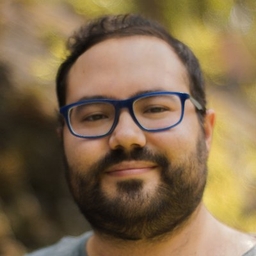
Rodrigo Pérez Ortega
Staff Writer at Science Magazine
Editorial Director at The Open Notebook
Science journalist @NewsfromScience | @Open_Notebook en Español | @UCSC_SciCom | Views my own | he/him🇲🇽🏳️🌈 @rpocisv.bsky.social
Articles
-
2 weeks ago |
science.org | Rodrigo Pérez Ortega
The self-reported race and ethnicity of people in the United States don’t always match their genetic ancestry.
-
3 weeks ago |
science.org | Rodrigo Pérez Ortega
Long before rats roamed sewers and cockroaches lurked in kitchen corners, another unwelcome guest plagued early civilizations. A new genomic study published today in Biology Letters suggests that bedbugs—the blood-feeding insects that haunt our hotel stays—were the first urban pests, proving an itchy menace for tens of thousands of years. “This is really amazing,” says Klaus Reinhardt, an evolutionary biologist at the Dresden University of Technology who was not involved in the new study.
-
1 month ago |
science.org | Rodrigo Pérez Ortega
With people of multiple origins and ethnicities, Brazil has long been recognized as one of the most genetically diverse countries in the world. Now, the largest genomic study of the Brazilian population to date, published today in Science, is painting a clearer picture of how that diversity came to be—and how centuries of colonization, migration, and social dynamics have shaped Brazil’s biology and health.
-
1 month ago |
science.org | Rodrigo Pérez Ortega
$Please enter a valid amountEmail:Please enter a valid emailCountry:Ialso wish to receive emails from AAAS/Science and Science advertisers,including information on products, services and special offers which mayinclude but are not limited to news, careers information & upcomingevents. Support nonprofit science journalismSophisticated, trustworthy reporting about science has never been more important.
-
1 month ago |
science.org | Rodrigo Pérez Ortega
Deep in the rainforest of Africa, a male chimpanzee approaches a tall tree with prominent roots and begins to slap them vigorously, creating a deep, percussive sound that can be heard kilometers away. Such “drumming” allows chimps to communicate across long distances. Now, two studies show the animals also drum to a distinct beat, which varies across chimp societies.
Try JournoFinder For Free
Search and contact over 1M+ journalist profiles, browse 100M+ articles, and unlock powerful PR tools.
Start Your 7-Day Free Trial →Coverage map
X (formerly Twitter)
- Followers
- 5K
- Tweets
- 6K
- DMs Open
- Yes

RT @NewsfromScience: Long before rats roamed sewers and cockroaches lurked in kitchen corners, another unwelcome guest plagued early civili…

A new study of bedbug genomes traces their success back to early civilization, and claims that they may be the first urban pest. More in my story for @NewsfromScience. https://t.co/2hizePDNnt

RT @NewsfromScience: Brazil has long been recognized as one of the most genetically diverse countries in the world. Now, the largest genom…